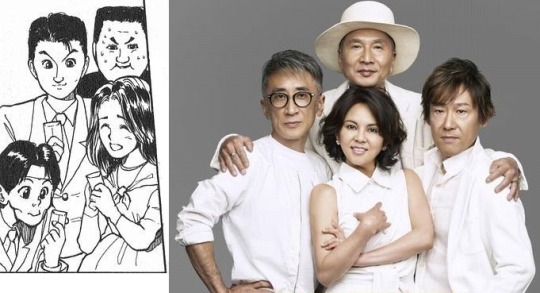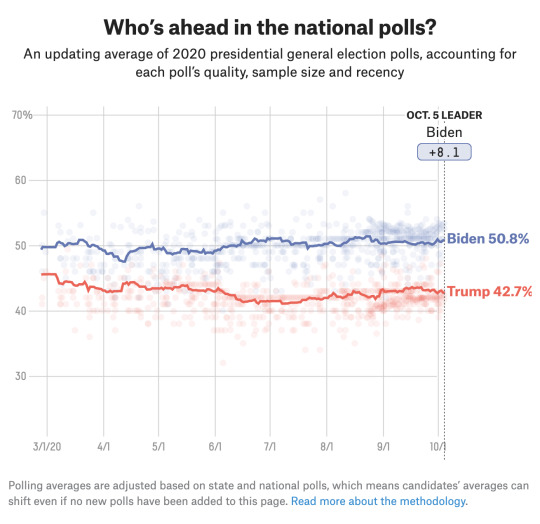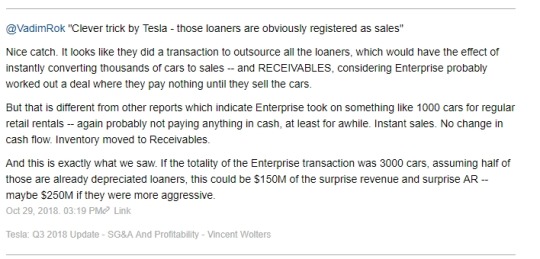#another version of the WSJ cover
Text

#bakugou katsuki#todoroki shouto#midoriya izuku#horikoshi art#official art#another version of the WSJ cover
161 notes
·
View notes
Note
In no way should you feel bad for writing amazing meta on Bakugou’s hero name. The only clown here is a certain someone, sad to say and I don’t mean to be harsh. as the author, HE made us believe the hero name was going to be a real character Moment, with three separate references and buildup that were all very serious in tone. So any meta written is based upon Hori’s initial buildup for the hero name however He then proceeded to shit all over his own set up during the reveal scene and continues to do so until this very chapter. My fandom is really at a low point right now, I try to tell myself to focus on the things I enjoy but those very things have managed to be ruined and ridiculed at every turn for the last year of this story. Do you think we’ll move on to another battle location next chapter?
Yeah - I feel so conflicted now - because I really want to enjoy the Bakugou-Mirko team-up (we've been waiting for this since forever), but the purely comic framing of it and both characters being reduced to a 1-tone gag of "fight and yell", just feels so at odds with the supposed gravity of their situation. It's hard to take the whole floating UA battleground seriously or feel any sense of danger when it radiates such campy energy.
I really want Bakugou to get to do something amazing before Deku shows up here, I want to see that mature, heroic version of him we've seen emerging post-war - but we are 3 chapters into the fight and so far it's been exposition/gags and the only explosion is that of fingers.
As for next chapter, since it's confirmed that there will be a Deku/Ochako color cover for WSJ next issue, I'm assuming we will stay with the weird love triangle BS for now. /sigh might as well get it out of the way and release us from our misery
#c1a asks#bnha manga leaks#bnha manga spoilers#we may have to wait for the Todo agni kai until summer#i just hope hori won't burn out by then#drawing a million fingers on Shiggy every week#like last time#by the time we got to dabi he was totally done#and then rushed the hell out of it#so i really really hope it's not the same pattern#the todoroki ending is pretty much the only thing i still care about
31 notes
·
View notes
Text
YYH and Togashi's musical references
I always find new references every time I read the manga, so I’ll probably edit this post in the future with new ones. If anyone knows more refs, please leave a comment or a message and I’ll add in the post giving the credits.
1. International artists: most of the bands and artists are from the rock/metal scene.
Keiko reading UDO in her English Class (v.2, p.98)
UDO is a German heavy metal band founded by the lead vocalist Udo Dirkschneider (ex-Accept) in 1987.

Keiko is reading an adapted version of the lyrics of “Unspoken Words”:
My thoughts are going back - back to the time
When I was young to live a life
A life of lies - full of lies
Then you came into my life
And you've changed so many things
That I've done before - that I've done before...
Togashi commented on the Table of Contents in 1991 that he was listening to UDO and Led Zeppelin as BGM. (WSJ issue 6, 1991)

Kuwabara’s “Moter-head” T-shirt (v.3-4, Genkai’s Tournament)
A reference to “Motörhead”, English rock band formed in 1975 by bassist, singer, and songwriter Lemmy (RIP, 2015). We can also see the names of two famous Motörhead‘s albums on his shirt: “Bomber”, 3th studio album (1979), and “Iron Fist”, 5th studio album (1982).

“Sodom” is probably from the German metal band formed in 1981 and “Sabbat” is probably a reference to “Black Sabbath”, English rock band formed in 1968 whose vocalist Ozzy Osbourne is very famous.
Michael Jackson in The Dark Tournament (v.6, p.132)
A man who needs no introduction. Michael Jackson wearing his famous white gloves and 'Smooth Criminal' hat, bringing a thriller night into the Tournament ;-)

The Scalper of the Dark Tournament and AC ϟ DC (v.6, pp. 172-173)
The suit, necktie and newsboy cap have everything to do with Angus Young’s famous costume. He is the co-founder, lead guitarist and songwriter of AC/DC.

So, most of us believe that the ticket seller was modeled after him. “I’m on a Highway to Hell”!
Imajin from Team Rokuyukai and John Lennon (v.6, p.170)
The name “Imajin” is a reference to the song “Imagine”. His character’s design also had some inspiration from John Lennon, such as John's famous round glasses.

Chapter 62 Opening and The Clash (v.7, p.132)
The Clash were an English rock band formed in London in 1976. Yu Yu Hakusho 62nd Opening Act. "The Second Round Begins!!" was inspired by the cover of The Clash’s self-titled debut studio album (1977).

Paul Simonon (bass): Kuwabara;
Mick Jones (guitars): Yusuke;
In Joe Strummer’s place (RIP) there’s a suspicious couple in the background ⬇ XD

Kuwabara and Megallica (v.14, chapter 124. "Fierce Rain...!!)
This is a classic and everyone knows it, but it definitely deserves a mention. The day Kuwabara threw everything away to attend a Megallica’s concert.

A tribute to Metallica or both bands - Megadeth and Metallica - as Dave Mustaine's exit from Metallica and the founding of Megadeth in 1983 was a pivotal moment in the metal scene.
We can also spot a Metallica’s poster on the wall of Kuwabara’s bedroom in volume 6, chapter 46. "Springtime for Kuwabara!!" (p.14)

And another poster above the TV with the letters “ETH” written on it. Probably, a poster of “Megadeth”. It’s hard to tell, because the image is small, but it looks like the skeleton hand of Megadeth’s mascot Vic Rattlehead. (v.6, p.9)

2. Japanese artists: I included some actors as well, as most of them are also singers.
Daisuke Motomoto and Youki Kudoh (v.1, p.197)
Daisuke's type of woman is the famous actress and singer Youki Kudoh.

Shizuru: Bunta Sugawara & Ken Takakura (v.2, p.131)
Shizuru’s favorite type of man was two elder and renowned actors. Both were born in the '30s and appeared in almost 200 Japanese feature films.

Born in 1931, Ken Takakura, known as Ken-san, was an actor and singer. He died of lymphoma on November 10, 2014. Born in 1933, Sugawara was also the model for the design of the One Piece character Sakazuki “Akainu.” He died from liver cancer on November 28, 2014 . Isn’t it a huge coincidence they both passed away of cancer on November 2014?
REBECCA [レベッカ] (v.1, p.192; v.3, p.163)
REBECCA are a Japanese rock band that had a great success in the 80′s, fronted by singer Nokko. Natsuko, Keiko’s friend, says a curiosity about REBECCA’s song “MOON”:
“It's true, there is a voice saying "SENPAI" at the beginning of the bridge” (note: bridge from the song structure).

It is said in the middle of this song, there is a mysterious woman voice calling "senpai" (veteran, senior). Honestly, I’m not sure if I can hear it lol.
There’s also a rumor that the three guys and girl who appear in volume 3 (upper left of page 163) during the lottery of Genkai’s Tournament are REBECCA. What do you think?

Eisaku Yoshida, actor and singer (v.4, p.46)
Kuwabara and Yusuke arrived in front of the Maze Castle in Makai in only 2 hours. Togashi made a joke about it and wrote a small text below the scene:
“Fast as the development of Eisaku Yoshida’s doramas.”

Akiko Matsumoto (v.6, p.152)
The actress and singer Akiko Matsumoto is a Japanese 80's idol. When Yusuke is sleeping in the ship, Kuwabara says Yusuke is so tired that he won’t get up even if Akiko Matsumoto was next to him.

Eriko Tamura in the Dark Tournament (v.6, p.158)
The super famous singer and actress Eriko Tamura appears in a panel during The Dark Tournament in the Hanging Neck Island’s Hotel. It was probably a reference to her manga/anime version of “Idol Densetsu Eriko” (1989).

Kuwabara’s Energy Drink and Pierre Taki (v.6, p.160)
The name of the front man for Japanese synth-pop group “Denki Groove” appears on Kuwabara’s energy drink. I’ve already made a detailed post about it and the polemic involving his name.

Space Battleship Yamato Opening Theme (v.13, p.62)
When the guys are about to leave the Hanging Neck Island, Yusuke starts to sing: “Saaaraaabaa” (Farewell) which is the beginning of the opening theme of the super famous anime “Space Battleship Yamato” (Uchuu Senkan Yamato, 1974), sung by Isao Sasaki.

Sensui, Itsuki and Jun Togawa’s performance on Hit Studio (v.16, p.17)
Sensui spares Itsuki’s life after he confessed he wanted to live one more day to watch the singer Jun Togawa on Hit Studio. Sensui also watches the show. In the anime, the line was changed to “the last episode of the dorama”.

Fun fact: Jun Togawa actually performed a few times on Hit Studio and Togashi said in an interview this was a moment he really experienced.
This performance is from 1984 and Togawa was promoting her debut album as a solo artist “Tamahime-sama”:
youtube
Trivia: to celebrate the 35th anniversary of Jun Togawa’s musical career in 2016, an album alongside the metal band Vampillia entitled "Watashi ga Nakou Hototogizu" ("I Will Sing Like a Cuckoo") was released. Togashi created black & white illustrations for their collaboration:


I know Togashi said in “Yoshirin de Pon!” (1994) that Mukuro was modeled after Kushana (Nausicaä of the Valley of the Wind) but Jun Togawa’s famous robotic arm from the 80′s reminds me Mukuro’s. She also performed the song “Radar Man” on Hit Studio wearing the cybernetic arm.

Akiko Wada and the earthquake (v.16, p.119)
When Sensui releases his sacred energy and the ground starts to tremble, a female citizen makes a comment: "Isn’t this Akiko Wada tapping her foot?". Akiko Wada is the famous singer, known as The Queen of the Japanese R&B. If you watch her performances, specially the from the 80s-90s, you’ll notice the peculiar way she shakes her legs and taps her foot while singing. When she debuted, she was also known for her tall stature, large physique and high tone voice.

“Otoko Nara” (v.17. p.171)
After saying goodbye and being dumped by Keiko, Yusuke starts to sing the famous military and wartime song “Otoko Nara” (男なら - “If you are a man”) from 1937. Translation to English
Yusuke: “Otoko nara, larilarila....”

3. Other mentions and references
WSJ issue 25, 1992; v. 6 opening illustration and v.8 cover
According to Togashi’s comments from the Artbook, these guys next to Yusuke were inspired by two black guys Togashi saw on a music video or magazine. But as he doesn’t remember where the inspiration comes from, it’s hard to tell the origin.

Anime: I’m only taking the manga and Togashi’s refs into consideration here. But you can always have fun searching in the animation for other references, like the Oingo Boingo poster in Kuwabara’s bedroom and Roger Dean’s artwork in the Makai landscape.
Other celebrities:
↪ Downtown (v.19, p.114-115): is a Japanese comedy duo consisting of Hitoshi Matsumoto and Masatoshi Hamada. Formed in 1982, they are one of the most influential comedy duos in Japan and famous for hosting variety shows, such as Downtown no Gaki no Tsukai ya Arahende!! Togashi has stated he’s a fan and even the name “Hunter × Hunter” came about while he was watching their TV show, in which the hosts often repeat what they say to make the audience laugh. People believe the TV program Juri, Koto and Ruka were attending in the last volume is a reference to the variety show. Juri calls one of the hosts Yamazaki-san which is probably a reference to Hosei Yamasaki one of the five members of Downtown Gaki no Tsukai's regular cast. The man watching the TV while smoking is Togashi.

↪ Kurama comparing himself to Kazaguruma no Yashichi from the dorama “Mito Komon” (v.5, p.201). I made a post about it.
↪ The family name “Minamino” was taken from the singer Youko Minamino, but other Japanese celebrities were also considered. I made a post about it.
↪ A mention to the late sumo wrestler Kurama Tatsuya (v.13, p.89). When one of Kurama’s senior overhear Kuwabara calling Minamino as Kurama, instead of using his human name, he says: Kurama? (using the kanji of the fighter’s name), the former sekitori?

↪ Byakko bringing up Carl Lewis (v.5, p.57) was hilarious. Kuwabara needed to jump a distance of 10 meters, 2 meters more than Carl Lewis. Probably a reference to the 1991 World Championships in Tokyo and Lewis' greatest achievements during the competition. These chapters from the Saint Beasts saga were being written during this time.

↪ Kuwabara’s name was inspired by two baseball players as Togashi explained in the comics and the databook. But he also mentions some achievements from other baseball players during the series and incorporates them in his sword techniques:
→ Hiromitsu Ochiai (v.4, p.74): The “Ochiai-ryuu Shui-dasha-ken” (The Leading Hitter Ochiai Style Sword) used by Kuwabara to bat Rando’s fireballs technique (Kashou Happa-ken) is a reference to the baseball player Hiromitsu Ochiai. He is considered one of the most important players in the history of Japanese baseball and was given the title of “shui-dasha” (leading hitter), a player who ends the season with the best batting average score. That’s why Kuwabara mentions “shui-dasha” in the name of the technique.

→ Satoshi Inamoto (v.5, p.55): During the fight with Byakko, Kuwabara wants to use his “Teikyo High School Sayonara Two-Run Homer Sword” to bat the Tiger Scream but he is stopped by Kurama.
There’s a small text written below the panel: “August 17, 1991, 12h45PM, hitter Inamoto”. It’s a reference to a match between Teikyo High School and Ikeda High School in 1991. Teikyo High School turned the game around and won thanks to Inamoto’s home run.

↪ Fubuki Sato and Masato Hagiwara (v.17, p.120): while her brother Kaisei likes to watch TV, Fubuki likes the actor, voice actor and professional mahjong player Hagiwara Masato-kun.

↪ Hiei and Medaka Ikeno (v.19, p.88): a woman on TV describes the ET (Hiei) who abducted her. “His height is about Medaka Ikeno”. He is a Japanese comedian known for his short stature, about 149cm, and for being the man whose 'size is same as a tie'.

↪ Arnold Schwarzenegger (v.19, p.113): when Kido goes to the movies, there’s a billboard announcing: “The Crying Game” (on the right) and “Schwarzenegger - Last Action Hero” (on the left). Toguro is said to be modeled after Schwarzenegger’s Terminator, but Togashi mentions in the Yu Yu Hakusho Artbook (2015) that "Younger Toguro is Sato", referring to Koji Sato, the main antagonist of 1989 film "Black Rain”, played by the Japanese actor Yuusaku Matsuda.

#yu yu hakusho#yoshihiro togashi#the clash#metallica#megadeth#acdc#angus young#motorhead#sodomband#black sabbath#udo dirkschneider#john lennon#michael jackson#carl lewis#jun togawa#rebecca#hiromitsu ochiai#kurama tatsuya#pierre taki#eriko tamura#roger dean#eisaku yoshida#bunta sugawara#ken takakura#isao sasaki#hit sudio#kazaguruma no yashichi#arnold schwarzenegger#last action hero#the crying game
203 notes
·
View notes
Link
ERIE, Pa.—To local leaders, a row of abandoned redbrick buildings in the heart of this Rust Belt city’s ailing downtown presents the best hope to spark a citywide revival.
The buildings—stripped down to their plaster walls, tin ceilings and worn wood floors—are part of a $150 million plan to draw more people to live and work downtown. One building, most recently a biker bar, will house a food hall with seating for nearly 200 people. An old bus terminal will be demolished to make space for an indoor courtyard that will connect to an incubator for culinary startups.
The project is the cornerstone of an effort to reimagine a city once defined by industrial giants such as Hammermill Paper Co. and General Electric Co. Erie has lost more than 30% of its population since 1960. Nearly 27% of its residents live below the federal poverty level, according to the Census Bureau, well above the 14.6% U.S. poverty rate.

Older industrial cities across the Northeast and Midwest are struggling to replace lost manufacturing jobs after decades of deindustrialization. Erie, with a population of about 96,000, presents a new test of whether—and how—a town built on manufacturing can redefine itself, the role a city’s largest employer can play and the potential impact of the new federal opportunity zone program, which provides tax benefits for those who invest capital gains in low-income areas.
“One of the biggest questions policy makers, economists and pundits are asking now is, ‘What do we do for places like Erie?’ ” said John Lettieri, chief executive of the Economic Innovation Group, a nonpartisan think tank that helped develop and promote the opportunity-zone program. “Is there a future for these places when the industry they were built around has withered?”
Previous efforts to turn around the area’s fortunes haven’t worked. A pedestrian-friendly mall downtown failed. A regional economic development agency filed for bankruptcy liquidation in 2016 after a plan to create a new transportation hub for freight traffic and other projects fell apart.
“We hit rock bottom,” said Tom Hagen, who moved to Erie at age 7 and is now chairman of Erie Indemnity Co. Known as Erie Insurance, it is the city’s largest employer and only remaining Fortune 500 company. “I compare it to an alcoholic who has to be in the gutter before he or she sees the light.”
The 94-year-old insurer will next year complete a $135 million expansion of its corporate campus. The sleek brick-and-glass building is within Erie’s downtown opportunity zone, but was started before the legislation was enacted and won’t qualify for the tax benefits.
As they looked for ways to rebuild, local business and philanthropic leaders traveled west to study how the Cincinnati Center City Development Corp. helped revitalize the Over-the-Rhine neighborhood, an effort led by Procter & Gamble Co., that area’s largest employer.

(above: The Erie Downtown Development Corp. is renovating Park Place and Sherlock's building in Erie, Pa).
Among the lessons: Start in the core of downtown so that the city’s anchor doesn’t pull you down. Cluster investments to gain momentum and attract additional capital. Create a nonprofit to redevelop blighted properties with the help of philanthropic, state and federal dollars. Tap private financing, a considerable challenge given Erie’s soft real-estate market and blighted properties.
One of Erie’s first steps was to create the Erie Innovation District in 2016, with a $4 million grant from local sources. It recruits about 10 technology startups to come to the city each year for a 10-week accelerator program, with the aim of creating local jobs. Several startups, including one developing tracking technology for manufacturers, have made Erie their home.
The following year, some of the city’s biggest employers and its largest foundation created the Erie Downtown Development Corp., a nonprofit to revitalize the city’s center. Many of the same firms kicked in $27.5 million to create an equity fund to support redevelopment projects that wouldn’t otherwise make financial sense.
Erie was one of the first cities to jump on the federal-opportunity zone program, creating a 58-page prospectus and identifying a dozen “shovel ready” projects, including the renovation of a 133-unit downtown hotel. Redevelopment would have happened with or without the opportunity-zone program, city leaders say, but the tax breaks will speed the process.
But so far, investors have gravitated to bigger cities such as Baltimore and Los Angeles, said John Persinger, chief executive of the EDDC. Social-impact investors, he said, want greater returns on their investments and are reluctant to invest in a city where they don’t already have a presence.
“Opportunity zones should never have been seen as unlocking a pot of gold at the end of a rainbow,” Mr. Persinger said.
Erie is looking to advanced manufacturers like Plastikos Inc., located just outside the city’s borders, to keep some factory work alive. In clean, brightly lighted rooms, robotic arms swing back and forth molding resins into medical device components for insulin pumps. More than 150 employees earn about $11 to $24 an hour; experienced toolmakers can earn up to $90,000 annually.
Going forward, technology companies will play a bigger role, said Joe Schember, who became Erie’s mayor in 2018. “A lot of people in Erie think we might have a once-in-a-lifetime opportunity to turn it around,” said Mr. Schember, a former bank executive who put himself through college by working at a foundry in the city. “And if we miss it, we might not have another chance.”
Health care has become another source of growth in Erie. Highmark Health and Allegheny Health Network are investing $140 million to expand their medical campus; the University of Pittsburgh Medical Center-Hamot is spending more than $110 million on a new building.
Erie is still home to a handful of old-line companies, such as American Tinning & Galvanizing, founded in 1931 and employing about 80 people. The company has managed to survive by keeping costs low and maintaining good relationships with other local manufacturers, said its president, Robin Scheppner.
Erie also hopes to work local connections. More than 300 people turned out to the city’s third-annual Erie Homecoming in August. This year’s event focused on opportunity zones, part of an effort to get local investors and expats to invest in the city. At the event, Erie Insurance announced a $50 million opportunity-zone fund that will include investments in its hometown.
The EDDC is planning $150 million of opportunity-zone projects focused on the city’s core. For the first project, Erie Insurance and the new equity fund will each provide about $2.6 million of the estimated $10 million cost of the new food complex. The new equity-fund arm is providing capital to purchase the buildings; it will cover the first losses on the project and gap financing if the EDDC can’t raise enough to cover the full project cost. Other projects will include more than 200 market-rate residential housing units, retail and office space and a new parking garage.
Liz Allen, a city council member, said she’s excited about development downtown but worries about potential displacement of some businesses and low-income residents.
“It’s a real balancing act, because you want cities to thrive,” she said.
The food hall was partially inspired by the city’s inability to persuade a grocery store to locate downtown. Another building on the block will include a fresh-produce vendor, a bakery, a butcher and a distillery.
“When people raise fears of gentrification, I say we can’t afford to lose one more person,” said Mr. Persinger. “We don’t want to push anyone out. We want to bring more people in and raise the quality of life for everyone.”
Corrections & Amplifications
The University of Pittsburgh Medical Center-Hamot is spending more than $110 million on a new building. An earlier version of this story misspelled Hamot as Hammot. (Oct. 7, 2019)
***
This was the entire story, sans a couple of photos, copied & pasted to circumvent WSJ’s paywall; thanks to my wife for finding this & passing it along. Remember WSJ is part of News Corp--the Murdoch media conglomerate that produces Fox News--and boycott accordingly.
https://www.wsj.com/articles/erie-hit-rock-bottom-the-former-factory-hub-thinks-it-has-a-way-out-11570440601
16 notes
·
View notes
Text
tl;dr: this latest academic journal hoax is over-hyped and the reporting on it is terrible
A trio of academics submitted 20 ridiculous papers to various feminist/gender/related-studies journals in an effort to show the journals to be ridiculous. 7 papers were accepted. The coverage has been gloating and the Twitter response has been gleeful. But the more I look into it, the less there is to it. This is troubling, because smart people like Paul Graham and Patrick Collison have retweeted about it.
WSJ article
The Chronicle of Higher Education article
Google Drive link with all the papers and the review comments
Here's the trio's essay on it. At times, I think they're deliberately vague about which ridiculous papers were accepted and which weren't. Here's a paragraph of theirs:
We used other methods too, like, “I wonder if that ‘progressive stack’ in the news could be written into a paper that says white males in college shouldn’t be allowed to speak in class (or have their emails answered by the instructor), and, for good measure, be asked to sit in the floor in chains so they can ‘experience reparations.’” That was our “Progressive Stack” paper. The answer seems to be yes, and feminist philosophy titan Hypatia has been surprisingly warm to it. Another tough one for us was, “I wonder if they’d publish a feminist rewrite of a chapter from Adolf Hitler’s Mein Kampf.” The answer to that question also turns out to be “yes,” given that the feminist social work journal Affilia has just accepted it.
The parallel structure of the paragraph, with 'The answer to that question also turns out to be "yes"' elides the very different fates of the two papers. Hypatia didn't publish the Progressive Stack paper, and in fact they rejected it three times. But phrasing it this way, you can describe it in the same paragraph as an accepted paper, and many people won't remember the difference. (Here's a Harvard lecturer's thread, with 10,000 Twitter Likes, describing the Progressive Stack paper as accepted.)
The coverage has been even worse. Here's a Quillette piece on it, with a part that a Facebook friend quoted:
[Hypatia] invited resubmission of a paper arguing that “privileged students shouldn’t be allowed to speak in class at all and should just listen and learn in silence,” and that they would benefit from “experiential reparations” that include “sitting on the floor, wearing chains, or intentionally being spoken over.” The reviewers complained that this hoax paper took an overly compassionate stance toward the “privileged” students who would be subjected to this humiliation, and recommended that they be subjected to harsher treatment.
This isn't just wrong; if anything, the reviewers opposed the shaming technique. Here are the full review comments for all three rejections of the paper. I don't see any concern for an overly compassionate stance, or any recommendation of harsher treatment. When a reviewer does mention it, their concern is that it might be ineffective, and they're uncomfortable with it. Here’s a quote from the second rejection:
What are experiential reparations? Say more about this. Also, some of your suggestions strike me as "shaming." I’ve never had much success with shaming pedagogies, they seem to foment more resistance by members of dominant groups.
And from the same reviewer in the third rejection:
Find a place for the experiential reparations. This still makes me feel uncomfortable, because it’s shame-y and I’m not sure that student can see it otherwise.
After reading the reviewer comments, I'm very sympathetic to the reviewers, and I update toward thinking that their field is not a made-up illegible jargon-fest. They say things like:
"There are dozens of claims that are asserted and never argued for."
"The author promises to explore key terms and explain why they are applicable to the classroom. They introduce: epistemic violence, epistemic oppression, epistemic violence, testimonial smothering, privilege-evasive epistemic pushback, epistemic exploitation, testimonial injustice, hermeneutical injustice, willful ignorance, virtuous listening, and strategic ignorance. This is too much ground to cover!!"
"The scholarship is not as sound as it could be; that is, the basic structure of the argument is plausible and interesting, but the submission has far too many issues that get in the way of a clear and sound presentation of the author’s argument."
"I think these are basically good insights, they need to be argued for more clearly and not just asserted as true. They are interesting claims, say more, say how, say why, and don't just assert...Explain."
These aren’t possible comments from a field full of fashionable nonsense that doesn’t mean anything. I'm sad to contemplate the reviewers trying to help someone fix the mistakes in their paper, while the authors' intention is to slip through as many mistakes as possible. As the editor wrote in an encouraging cover letter:
At the same time ref #1 is encouraging about your revisions. You'll note that ref #1 says, for example, that it's your earlier improvements that have generated some of the new problems that need attention!
See also this Twitter thread by one of the reviewers for the Masturbation is Rape paper (which was rejected). It's sad - he rejected the paper, but wrote some encouraging things, and the hoaxers quoted the positive parts in their essay.
I haven't looked at all the papers in detail; this isn’t a thorough investigation of all of it. Maybe I happened across the least-bad papers and the most-misleading coverage first. I think the "fat bodybuilding" paper is just as bad as it sounds: "fat bodybuilding" would be unhealthy, unpopular, and no sport has ever been started by someone proposing it in a paper to an obscure journal.
But other accepted papers, I think, use a trick: invent some fake data of interest to the journal, and include a discussion section with some silly digressions. The journal accepts the paper because the core is the interesting data, and then the hoax coverage says that the paper is about the silly digressions. For example, the core of the dog park paper is a fake observational study showing that humans, especially males, are faster to stop male-on-male dog sexual encounters than male-on-female sexual encounters. I think that's fine; it is actually indicative of heteronormativity or homophobia or whatever. The paper also has an angle about canine rape culture, and that is indeed silly, but the paper is not best described, as The Chronicle of Higher Education did, as being "about canine rape culture in dog parks in Portland".
There are things to learn from this whole thing. I have a lower opinion of fat studies than I did before. But I have a higher opinion of the various fields that correctly objected to ideology-pleasing buzzword-filled digressions, and I wish the coverage noted that in equal measure. I get the impression you have to fake some interesting data to get much Sokal-style fashionable nonsense through, and even then, they'll catch most of it.
(Maybe I’m minimizing the ridiculousness of what did get past the reviewers. I think a younger, more idealistic version of me would have been more shocked by it, like the commenters at Hacker News who think that peer review should be able to detect fabricated data. My mild reaction is partly due to not expecting Idealized Science-level rigor of these fields to start with.)
And no-one should be saying anything about the rejected papers, except for praising the journals for rejecting them. If you ask someone out, and they say they're flattered but they only like you as a friend, don't gloat that they said that they like you. It's a rejection.
424 notes
·
View notes
Text
[ad_1]
Kristina O’Neill has a real knack for outshining other magazines like ELLE, Harper’s Bazaar and Vogue. Since taking over WSJ. Magazine back in 2012, we’ve been given tons of utterly sublime covers featuring Doutzen Kroes, Angelina Jolie, Charlize Theron, Gigi Hadid, Sofia Coppola, Reese Witherspoon, Regina King, Ashley Graham, Karlie Kloss…need we go on? The publication’s offering for May 2022 takes us to Sri Lanka where Imaan Hammam wears a bejeweled dress from Miu Miu’s Spring 2022 collection picked by Kate Phelan for the image photographed by Nadine Ijewere. IMAGE: WSJMAGAZINE.COMAlthough the mag’s latest divided our forums. “That is not a good image,” declared caioherrero the moment the cover dropped.“The angle is weird on the cover. But my god, Imaan Hammam looks beautiful!” reasoned mikel.“Great composition and location, but the hands and positioning ruined it,” critiqued Urban Stylin.[ Not a tFS forum member yet? Click here to join! ]But not everyone is on the same page. “I like the composition of the cover, the hands look delicate and it’s a rather unusual angle. This green dress paired with the brown color of the boat and that landscape in the background… Simply stunning. Imaan looks gorgeous…” Valentine27 chimed in.“Another ultra fabulous cover from WSJ. Magazine and there’s always cause for celebration when Imaan Hammam is made cover girl. Not one for Nadine Ijewere’s photography, but it’s beautiful here, I like the angles and the coloring. The cover image itself feels very calming and serene,” admired vogue28.“Love stories that combine fashion and traveling!” exclaimed thiago:).Meanwhile, versustito simply described the outcome as “amazing” and we could not agree more.See more and share your thoughts here.(function(d, s, id) var js, fjs = d.getElementsByTagName(s)[0];if (d.getElementById(id)) return;js = d.createElement(s); js.id = id;js.src = "//connect.facebook.net/en_US/sdk.js#xfbml=1&version=v2.7&appId=186081771460756";
fjs.parentNode.insertBefore(js, fjs);(document, 'script', 'facebook-jssdk'));
[ad_2]
Source link
0 notes
Quote
Activism vs Slacktivism
As
highlighted in the previous post, one of social media’s main strengths is its
ability to create a participatory culture by connecting users together. In
recent times, this element of social media has been a key tool for facilitating
activism, acting as an organizing component, and as a way of generating
awareness of societal issues. The enthusiast and sceptic viewpoints are best
illustrated by comparing the ideas of digital activism with ‘slacktivism’.
Slacktivism,
slacker activism, is a deprecating term attributed to many social media
campaigns, often criticizing the ability of social media to enact change
outside of their platforms.[1] Critics point out that
likes and shares do not go far enough, campaigns focusing on their digital
activism run the risk of giving participants a false sense of addressing
certain issues by contributing to spreading awareness. This viewpoint is not
speculative but is backed up by many studies. Research done by the University
of British Columbia’s Sauder School of Business found that when participants
had the opportunity to show support through a social media group or by signing
a petition, they were less likely to donate money or volunteer their time in
the future.[2]
Furthermore, their research found that if the initial act of support was
private, participants were more likely to reengage with the cause.[3] This would suggest that
not only is there a false sense of addressing the issues, but social media
activism also addresses a desire to present well to other people. This would
indicate that a large social media presence may not be an accurate reflection
of public opinion towards a certain topic. Why then do many social media
campaigns focus on growing their followers?
While
the study demonstrated that initial public support through social media
diminishes further engagement it fails to quantify the amount of people that
will continue to talk about these issues with others. The Center for
Information and Research on Civic Learning found that people that engage with
online causes are more likely to talk about them in private.[4] The goal of social media
campaigns is not to fix the issue through a like, but to shift public debate
towards their cause and using that time in the public eye to pressure those in
a position to enact change to do so. If an online following is large enough,
campaigns that originate online may end up covered by conventional news sources,
further helping to shape public debate. People that hear about the cause
indirectly may donate, even if a small portion of participants donate their
time and money, that is still an increase from if the social media campaign did
not exist. Many activist movements have been funded by their social media
following using their platforms as an opportunity for crowd funding. The
environmental activist group Extinction Rebellion is funded by non government
organisations, private donations, and crowdfunding with the later making up 60%
of their donations.[5]
Extinction Rebellion has been instrumental in pressuring the government of the
United Kingdom to declare a climate emergency which has since made a legal
obligation to achieve net zero carbon emissions by 2050.[6]
There
have been many examples of online movements crossing into the offline world.
#BlackLivesMatter, which began following the acquittal of George Zimmerman for
the shooting of Trayvon Martin, has grown into a global network working to
build a society that is just and fair toward black people.[7] The hashtag has been used
to reveal incidences of police brutality and racially motivated violence which
has been co-opted by any group of people seeking to fight racism and systemic
inequality. #ALS and #IceBucketChallenge was able to successfully fundraise for
amyotrophic lateral sclerosis by creating a challenge where people would dump
ice over their heads or donate to charity. The ALS Charity Foundation saw
$168,000 donated in the first week which was a massive increase from the
$14,000 raised the year previously in a much shorter time frame.[8]
Hashtag
campaigns and social media followings are effective for gaining awareness and
donations, another benefit of social media is its ability to help facilitate
offline movements such as protests or demonstrations. Messaging services allow
activists to organize, platforms such as Twitter help spread awareness of key
dates or events, and Facebook allows movements to maintain an engaged user base
by creating a digital social space for members to communicate with other
people. Social media is a necessary tool for organizing large groups of people
and makes carrying out public activism much easier. WhatsApp and other
encrypted messaging services have been used by activists to react to events
quickly, allowing them to respond to and organize events quickly en masse.[9] The privacy afforded by
these messaging services makes it harder for those the groups are fighting to
shut down their activities.
To
conclude, social media has had an overwhelmingly positive impact on modern day
activism. While critics believe online activism is more akin to slacktivism, it
is unwise to dismiss an entire movement because some of the members may not be
committed to future help. Social media has given many organisations the ability
to focus on keeping and retaining the individuals that do contribute, and
allowed them to leverage their following in the form of public pressure to
impact real change.
[1]
UNAIDS Outlook Report: July, 2010
(World Health Organization, 2010), pp. 142-143.
[2] Kirk Kristofferson, Katherine White
and John Peloza, "The Nature Of Slacktivism: How The Social Observability
Of An Initial Act Of Token Support Affects Subsequent Prosocial Action",
Journal
Of Consumer Research, 40.6 (2013), 1149-1166
.
[3]
Ibid.
[4] "So Much For
"Slacktivism": Youth Translate Online Engagement To Offline Political
Action",
Circle.Tufts.Edu, 2021
[Accessed 15 January 2021].
[5] "XR Funding Stats",
Google
Docs, 2021
[Accessed 15 January 2021].
[6] "The Ten Point Plan For A Green
Industrial Revolution (HTML Version)",
GOV.UK, 2021
[Accessed 15 January 2021].
[7] "About",
Black Lives
Matter, 2021 [Accessed 15
January 2021].
[8] "'Ice Bucket Challenge' Leads
To Major Surge In Donations To ALS Association",
Boston.Cbslocal.Com,
2021
[Accessed 15 January 2021].
[9] Fiona Law, Te-Ping Chen and Newley
Purnell, "Apps Speed Up, And Often Muddle, Hong Kong Protesters’
Messages",
WSJ, 2021
[Accessed 15 January 2021].
0 notes
Link
via Politics – FiveThirtyEight
There’s been so much news going on that I nearly forgot about the existence of a Supreme Court vacancy when participating in a virtual conference this morning. And in some ways, the news makes life hard for us polling analysts. We have had, in rapid succession: the death of Justice Ruth Bader Ginsburg, a series of threats by President Trump in which he refused to commit to a peaceful transition of power, the announcement of Trump’s intention to nominate Amy Coney Barrett to replace Ginsburg, the release of substantial information about the president’s tax returns by the New York Times, the first presidential debate, the news of Trump’s COVID-19 diagnosis and subsequent hospitalization — along with a cluster of other cases at the White House — and now his plans to leave Walter Reed Medical Center later today.
With that said, the debate provides a clear enough line in the sand — with many pollsters planning releases just prior to or just after the debate — that it’s worth doing a before-and-after comparison of the polls.1 One way to discern this is via our national polling average, where Biden’s lead has inched up to 8.1 points from 7.1 points before the debate:

Another way to see this is by comparing post-debate polls to the last, pre-debate version of both national polls and polls of the same states by the same polling firms. That’s what I’ve done in the table below, covering the 11 national polls and 11 state polls that have been released since the debate. And on average, Biden gained 1.5 percentage points from the pre-debate to the post-debate versions of these polls.
Biden’s gained some ground since the debate
Change in Joe Biden’s margin in each pollster’s post-debate poll compared to their latest, pre-debate version, at the state and national level
Pre-debate poll Post-debate poll Pollster End date Biden lead or deficit end date Biden lead or deficit Diff. AZ NYT/Siena 9/15 +9.0 10/3 +8.0 -1.0 FL NYT/Siena 6/18 +6.0 10/1 +5.0 -1.0 GA Landmark Communications 8/31 -7.0 9/30 +2.0 +9.0 MI Public Policy Polling 8/29 +4.0 10/1 +6.0 +2.0 MO Remington 9/17 -8.0 10/1 -5.0 +3.0 NH Emerson College 11/26/19 +4.0 10/2 +8.0 +4.0 OH Trafalgar Group 10/3 -4.0 OH YouGov 7/24 -1.0 10/2 +0.0 +1.0 PA YouGov 9/21 +4.0 10/2 +7.0 +3.0 PA NYT/Siena 9/27 +9.0 10/2 +7.0 -2.0 US YouGov 9/23 +5.0 10/3 +8.0 +3.0 US YouGov 9/23 +5.0 10/2 +8.0 +3.0 US NBC/WSJ 9/16 +8.0 10/1 +14.0 +6.0 US John Zogby Strategies 8/29 +4.5 10/2 +2.0 -2.5 US IBD/TIPP 9/19 +6.0 10/1 +3.0 -3.0 US HarrisX 9/25 +5.0 10/1 +7.0 +2.0 US Data for Progress 9/15 +11.0 10/1 +10.0 -1.0 US Ipsos 9/29 +9.0 10/1 +9.0 +0.0 US Ipsos 9/29 +9.0 10/3 +10.0 +1.0 US Change Research 9/20 +9.0 9/30 +13.0 +4.0 US Morning Consult 9/29 +8.0 10/4 +9.0 +1.0
Trafalgar Group has not previously polled Ohio, so no comparison is available. For the John Zogby Strategies polls, versions with and without third-party candidates are averaged together. The previous NYT/Siena poll in Florida and the Emerson College poll in New Hampshire was conducted among registered voters, while the post-debate polls were conducted among likely voters.
In some cases, the pre-debate poll was conducted months before the debate. But even if we only focus on the polls that released results at some point in September, the top line is similar: Biden’s gain is 1.4 percentage points, on average. And for what it’s worth, a swing of 1 or 2 points toward Biden is consistent with the effects that first debates have had for challengers in the past — although we should note that sometimes a debate bounce fades after a couple of weeks.
These averages, of course, conceal a lot of variation within individual polls; depending on which poll you look at, Biden’s national lead is as large as 14 points (in the most recent NBC News/Wall Street Journal poll) or as small as 2 points (in a John Zogby Strategies poll). I’ll admit to finding the NBC/WSJ poll intriguing, as it’s the only live-caller national poll we have since the debate, and NBC/WSJ polls tend to stick pretty close to our polling averages. Still, averaging the polls is the right strategy in the long run.
Because so many polls have recently been released, you’re going to have a few eccentricities. Remember, an 800-person poll nominally has a 3.5-point margin of error. However, that margin pertains only to one candidate’s vote share; in a two-candidate race, the margin of error on the difference between the candidates will be roughly twice that then, or 7 points in this case. That means, if Biden is truly ahead by 8 points, it should be fairly routine to get everything from a 15-point Biden lead to a 1-point lead. And keep in mind that with a confidence interval of 95 percent, the margin of error only covers 95 percent of polls; 1 in 20 polls should fall outside that range. (At least in theory; in practice, pollsters are often reluctant to publish polls that appear to be large outliers.)
It’s harder to tell, though, what effect the president’s COVID-19 diagnosis may have had on the race. YouGov conducted polls right before and after the news and found Biden ahead by 8 points in both. Morning Consult shows Biden having gained 1 point over the past few days. And Ipsos had Biden ahead by 10 points in a poll conducted after the news of Trump’s diagnosis broke, compared to Biden’s 9-point advantage in a poll conducted after the debate but before the president’s diagnosis. The John Zogby Strategies poll that showed Biden ahead by only 2 points nationally was also conducted after the COVID-19 news, although that’s not a pollster I’d give a lot of credence to.
The series of state polls by the New York Times and Siena College are also worth mentioning here, since they’re the only live-caller polls in the mix apart from the NBC/WSJ one — and since they were conducted partly after Trump’s COVID-19 diagnosis. And these contain strong results for Biden, showing him with leads of 8 points in Arizona, 7 points in Pennsylvania and 5 points in Florida– above his polling averages in each state. However, they’re still smaller leads than what previous NYT/Siena polls of those states found — Biden led by 9 points in their Arizona poll in September, for instance.
This raises an interesting question: Should you focus more on how a poll compares to a pollster’s previous poll or how it compares to other polls in that state? There isn’t really a right answer here, it’s a mix of both. But to explain how our model views this, in the case of the September Arizona poll, a 9-point lead had been a particularly strong result for Biden to the point of being a mild outlier. So the most recent NYT/Siena poll counted as a good result for him on balance, as it confirmed he has a clear lead there now, and he gained ground in our Arizona polling average.
Finally, keep in mind that the reason it’s still so hard to understand the effects of the president’s COVID-19 diagnosis is because it is an evolving story. It’s not just his prognosis, which can vary from day to day under the coronavirus, but also the news about the cluster of cases at the White House and the lack of reliable information about his condition. So if the public wasn’t initially sympathetic to Trump — and they mostly weren’t, in part because a large majority of the public thinks Trump didn’t take appropriate precautions — everything we’ve learned since then probably isn’t going to make public sentiment better for him.
With all that said, the situation remains unpredictable. This year, of course, unpredictable news events haven’t always had a large effect on the polls.
0 notes
Text
What’s in a Hedcut? Depends How It’s Made.
What’s in a Hedcut? Depends How It’s Made.
https://ift.tt/2S20s3p

The main difference was in the hair.
In the below image on the left, the crests on the Hollywood actress’s blond waves were detailed, crisp, almost photographic. In the image on the right, they looked faded, imprecise, impressionistic and a little bit lighter.
The secret behind these differing locks was the way they were created.
Today, The Wall Street Journal is offering all members the chance to make “hedcuts” of their own. But unlike the iconic drawings that traditionally appear alongside our journalism, artists aren’t involved in creating them—computer scientists are.
These technology-generated versions are made in real time after you upload your photo. Each photo that is uploaded improves our artificial intelligence models, which we have spent a year training to visually evoke the special way that Journal artists have hand-drawn our signature images for the past 40 years.
The hedcut is a drawing created largely out of dots and hatched lines. It stems from a centuries-old tradition that is also used around the world to illustrate currency. At the Journal, we typically use hedcuts to depict notable subjects in our stories and our journalists who write them. We also use this stippled style of drawing to illustrate our daily feature known as the A-Hed.
Grumpy Cat shot to internet fame in 2013. This hedcut ran alongside an A-Hed covering her viral popularity.
Hedcuts first appeared on the front page of the Journal in 1979. Their classical feel suited the paper’s formal, famously text-heavy style at the time. Even as the Journal embraced more visuals across all our platforms in the decades since, the hedcut has persisted—becoming something of a status symbol for politicians, celebrities and reporters alike.
“The hand-drawn hedcut portraits are highly coveted,” said the Journal’s chief art director John Nichols. “They are the mark that you’ve made it at the Journal.”
Mr. Nichols oversees a team of five artists who create these drawings each day, typically spending four to five hours per image.
Not far from some of the illustrators is the Journal’s 21-month-old R&D Lab. These data scientists and machine-learning experts aim to bring science into the art of storytelling. In the case of the Journal’s hedcuts, this meant figuring out the best technical methods to mimic the stippling (dots) and hatching (lines) that give hedcuts their classic feel.
One initial challenge was deciding whether to use artificial intelligence at all. A simple way to create automated hedcuts could have been to use the light-contrast technology available in Adobe Photoshop to mimic the dark and light parts of a photograph in a stipple style.
The R&D Lab weighed its options and ultimately decided to go with the AI model. They just had to train it for things like curly hair. (Training, in algorithmic-speak, means to run ever more data points through a model, provide feedback on the machine’s performance and watch it get progressively better.)
There continued to be challenges in getting the model just right. One involved separating people from their background. In many instances, portrait subjects found themselves chinless—or worse, headless—in their hedcut. Another difficulty was teaching the tool to render hair and clothes differently than skin, which was often a matter of whether to crosshatch versus stipple.
The most harrowing issue of all was overfitting, which happens when a model fits a limited set of data too closely. In this case, that meant the machine became too satisfied with its artistic ability and began producing terrifying monstrosities like these:
Early on in the training of the Journal's AI model, the machine fit a limited set of data too closely and produced some ghoulish images.
And then there was the issue of baldness. When the R&D group first created the algorithm, they didn’t feed in enough images of bald people.
“We fed the bot photos of Cory Booker, who is bald, and the stipple drawing that was generated had this funny little thing on top of his head,” said Eric Bolton, the data scientist who developed the Journal’s hedcut model. “We realized the bot wasn’t doing a good job for people without hair. The images made them look like they were missing part of their heads.”
The AI tool initially left blank spaces in the portrait, at left, of Democratic presidential candidate Cory Booker. With more training, the tool learned how to account for baldness.
The machine had to be better trained to recognize distinct aspects of a person’s appearance. “We had to go through and hand-tag over 2,000 photos, including a lot of bald men, so that the machine would learn what baldness is,” Mr. Bolton said.
A week or two later, the algorithm was able to produce bald Bookers—in 90 seconds.
Wall Street Journal artists will continue to create the hedcut drawings you see on our stories each day. But our new AI-driven tool offers WSJ members a chance to partake in the tradition by creating their own here.
—Alyssa Zeisler, Allison Foley and Eric Bolton contributed to this article.
Write to Francesco Marconi at [email protected]
Copyright ©2019 Dow Jones & Company, Inc. All Rights Reserved. 87990cbe856818d5eddac44c7b1cdeb8
https://ift.tt/35xwWq7
via WSJ
December 17, 2019 at 07:36PM
0 notes
Text
Re: My Choice of Sources for News Links
I’m not posting the anonymous ask I just got as it is a nonsense libelous conspiracy theory.
I mention it because of my sincere bafflement as to why someone reading my journal, in which I hardly ever use the Wall street journal for anything as I don’t read it, it’s not a preferred source for a variety of reasons, and is hardly ever relevant to my interests, would bother writing in a long attack on them to me based on what looks like stuff they or someone else in the Conspiracy Theory Swamps made up. It seemed addressed to me as if I liked them and was in some way a partizan. O.o
Like, I wish they hadn’t been anonymous so that I could directly ask them what they were thinking and why they chose to target me with them. I am pretty sure I liked to the WSJ at some point in the past because I literally couldn’t find whatever it was somewhere else, but really? Why not put this energy into engaging with someone who actually would be relevant to the fantasy they subscribed to.
For the record, I’m super poor, which means I have to rely on free articles and I’m guessing most of my readers are the same. If I had money to buy a subscription to any paper in the country at all, I’d pick the Washington Post and/or the Seattle Times. I’d pick the Post because I think they are the best at what they do right now. I used to take both my local paper and the Seattle P-I, back before the P-I and the Times became one thing. My local paper is terrible and literally makes up quotes, is unreliable as to facts, and has a serious editorial bias. They also are big on vicctim blaming and wentfull on character assassination on him even though he was about as innocent as it’s possible to be and literally worked for them. Did I mention they area shitty employer? well that too. I vowed never to give them another penny for any reason as a result. I love and support local papers and believe they are incredibly important. I thought I’d always be a local paper subscriber, but not to this particular one. If the PI hadn’t been so expensive that I had to drop my subscription, I’d still be reading the PI/Times. I miss being as up on state politics as I used to be, but my financial situation is going to be incredibl precarious for the next few years.
So anyway, if I had money to online subscribe to the Post? I’d do it, but I don’t. As a result, I try to save my free articles for the most important things. Same with other limited access things like the NYT, Wired, Vanity Fair, etc.. I do my best to choose the most reliable source out of a set covering an issue that doesn’t involve pay walls. I carry a whole tiered list in my head, and while I can’t always get the best, I do try for the best I can reasonably get. I don’t link things like the Daily Mail, the Sun, mic.com, the New York Post, though I will occasionally end up with their links in the comments, which I can’t help. This is also why sometimes I will link different versions of the same basic news item. They generally have different takes or different secondary information/context/etc., or it might be a situation where a reader might prefer one source over another. Do you want just the basic facts or do you want it in a larger political historical context for example.
I thought I’d mention how I do my selection since it occasionally comes up and this weird anon thing reminded me I should probably explain why I do things the way I do.
I can not 100% know anything close to all the English Language news outlets in the world. I don’t even try. When I’m forced to sample from an unfamiliar outlet, I do try to google search them for bias and reputation, but that’s not going to be perfect. If I sample something you know isn’t a good source, feel free to let me know and I’ll look deeper into it. I can’t reasonably go back and dig that source out of everything I’ve posted across social media all the way back to the mid-oughts, but I can amend going forward, as I have on past occasions when such things were pointed out to me.
I do my best, and with me especially as I’m not a journalist, remember to look skeptically at anywhere you get links and news. We all have selection bias, whether in history, journalism, or in life. I do this because I have time and interest to try to share things going on the world with people who are busy and can’t possibly keep up. I am one disabled person in frail health. Do not take what I post as anything close to everything out there. I do my best, but again, one person with particular interests and biases. What you see here is whatever I managed to find that dayish.
So caveat emptor.
0 notes
Text
Facebook told it may have to suspend EU data transfers after Schrems II ruling
Ireland’s data protection watchdog, the DPC, has sent Facebook a preliminary order to suspend data transfers from the EU to the US, the Wall Street Journal reports, citing people familiar with the matter and including a confirmation from Facebook’s VP of global affairs, Nick Clegg.
The preliminary suspension order follows a landmark ruling by Europe’s top court this summer which both struck down a flagship data transfer arrangement between the EU and the US and cast doubt on the legality of an alternative transfer mechanism (aka SCCs) — certainly in cases where data is flowing to a non-EU entity that falls under US surveillance law.
Facebook’s use of Standard Contractual Clauses to claim a legal basis for EU data transfers therefore looks to be fast running out of borrowed time.
European privacy campaigner Max Schrems, whose surname is colloquially attached to the CJEU ruling (aka Schrems II) — and to an earlier ruling which invalidated the prior EU-US data transfer deal, Safe Harbor, on the same grounds of US surveillance overreach — filed his original complaint about Facebook’s use of SCCs all the way back in 2013. So the tech giant has had more than half a decade to get its European data ducks in order.
Reached for comment on the WSJ report, Facebook pointed us to a freshly published blog post, also penned by Clegg — who acknowledges “significant uncertainty” for businesses operating online services that rely on transatlantic data flows in the wake of the Schrems II ruling.
In the blog post the former deputy prime minister of the United Kingdom goes on to advocate for “global rules that can ensure consistent treatment of data around the world”.
“The Irish Data Protection Commission has commenced an inquiry into Facebook controlled EU-US data transfers, and has suggested that SCCs cannot in practice be used for EU-US data transfers,” Cleggs writes. “While this approach is subject to further process, if followed, it could have a far reaching effect on businesses that rely on SCCs and on the online services many people and businesses rely on.”
Facebook’s blog post lobbying for global rules to ensure “stability” for cross-border data transfers paints a picture of how the Schrems II ruling might negatively affect European startups — claiming it could result in local businesses being unable to use US-based cloud providers or run operations across multiple time zones.
The blog post doesn’t have anything much to say on how Facebook itself having to stop using SCCs might affect Facebook’s own business — but we’ve discussed that before here. (The short version is Facebook may need to split its infrastructure in two, and offer a federated version of its service to EU users — which would clearly be expensive and time consuming for Facebook.)
“Businesses need clear, global rules, underpinned by the strong rule of law, to protect transatlantic data flows over the long term,” Clegg goes on, before lobbying for regulatory leniency in the meanwhile, as Facebook continues to transfer EU data to the US in what he claims is “good faith” — despite the acknowledged legal uncertainty and the complaint in question dating back well over half a decade at this point.
Here he is pleading for data transfer mercy on behalf of other businesses who are not involved in this specific complaint: “While policymakers are working towards a sustainable, long-term solution, we urge regulators to adopt a proportionate and pragmatic approach to minimise disruption to the many thousands of businesses who, like Facebook, have been relying on these mechanisms in good faith to transfer data in a safe and secure way.”
EU lawmakers warned recently that there would be no quick fix for US data transfers, despite some parallel Commission noises about working with the US on an enhanced replacement mechanism for the now defunct ‘Privacy Shield’. (Although for businesses that aren’t, as Facebook is, subject to FISA 702 there may be ways to use SCCs for US transfers that are legal, or at least law firms willing to suggest measures you could take… )
Speaking to the EU Parliament last week, justice commissioner Didier Reynders suggested changes to US surveillance law will be needed to bridge the legal schism between US surveillance law and EU privacy rights.
And of course legislative changes require both time and political will. Although it’s interesting to see Facebook’s global VP feeling moved to wade in and call for global solutions for cross-border data transfers. Perhaps the tech giant will funnel some of its multi-million dollar domestic lobbying budget on making the case for reforming US surveillance law in future.
Ireland’s data protection regulator declined to comment on the WSJ report when we got in touch.
Schrems, meanwhile, is not sitting on his hands. In a statement following the newspaper’s report he said his digital rights not-for-profit, noyb, was not informed about the preliminary order by the DPC — speculating the information was leaked to the newspaper by Facebook to draw political attention to its cause.
He also reveals an intent by noyb to start a legal procedure against the DPC, saying it informed Ireland’s regulator this week that it plans to file an interlocutory injunction over the opening a ‘second’ procedure into the matter — arguing this move is in breach of a 2015 court order and is essentially the equivalent of letting Facebook carry on a multi-year game of legal whack-a-mole where it never actually faces enforcement for breaking each specific law.
“Facebook is knowingly in violation of the law since 2013. So far the DPC has covered them and for seven years refused to enforce the law. It seems after the second judgement by the Court of Justice not even the DPC can deny that Facebook’s international data transfers are built on sand,” Schrems told TechCrunch.
“At the same time, Facebook has in internal communication indicated that it has again shifted its legal basis from the SCCs to [the GDPR] Article 49 and the contract they allegedly sign with users. We are therefore very concerned that the DPC is again only investigating one of two legal basis that Facebook uses. This approach could lead to another frustrated case, like the ‘Safe Harbor’ case in 2015.”
What’s new since 2015 is Europe’s General Data Protection Regulation (GDPR) — which came into application in May 2018 and has led EU lawmakers to claim standard-setting geopolitical glory, as the issue of data privacy has risen up the agenda around the world, propelled by the deforming effects of platform power on societies and democracies.
However the two-year-old framework has so far failed to deliver anything much at all on major cross-border complaints which pertain to platform giants like Facebook (or indeed to the adtech industry). This summer a Commission review of the regulation highlighted what it described as a lack of uniformly vigorous enforcement.
Ireland’s DPC is fully in the spotlight on this front too, as the lead regulator for a large number of US tech firms.
It finally submitted the first draft decision on a cross border complaint earlier this summer — but a final decision on that case (relating to a Twitter security breach) has been delayed as the draft failed to gain the backing of all the region’s data supervisors, triggering further procedures related to joint working under the GDPR’s one-stop-shop mechanism.
Any order from the DPC to Facebook to suspend SCCs would similarly need to gain the backing of the bloc’s other regulators (or at least a majority of them). Per the WSJ’s report, Ireland’s regulator has given Facebook until mid-September to respond to the order — after which a new draft would be sent to the other supervisors for joint approval.
So there’s further delay built into the GDPR process before any final suspension order could be issued against Facebook in this seven year+ case. Move fast and break things this most certainly is not.
The WSJ also speculates that Facebook could try to challenge such an order in court. “Internally, Facebook considers the preliminary order and its future implications a big deal,” it adds, citing one of its unnamed sources.
Max Schrems on the EU court ruling that could cut Facebook in two
from RSSMix.com Mix ID 8204425 https://ift.tt/3k5qnBU
via IFTTT
0 notes
Text
Newsletter: Jobs, Jobs, Jobs
This is the web version of the WSJ’s newsletter on the economy. You can sign up for daily delivery here.
It’s jobs day! We’ll have a special edition of the newsletter after official U.S. employment numbers are out. First, Jeff Sparshott here with the latest on the economy.
Fresh Low, Still High
Filings for jobless benefits fell to their lowest level since the coronavirus hit the U.S. in March—a sign layoffs eased somewhat in a still struggling labor market. Initial unemployment claims fell by a seasonally adjusted 249,000 to 1.2 million for the week ended Aug. 1, the Labor Department said. While lower, the figure remained at a historically high level for the 20th straight week and well above the pre-pandemic record of 695,000 in 1982. The number of people receiving benefits through regular state programs, which cover the majority of workers, decreased to its lowest level since April, Eric Morath reports.
The decline in applications came as an extra $600 a week in pandemic-related unemployment benefits ended. Analysts were split on the degree to which the end of enhanced unemployment benefits caused the slight drop. Lawmakers and the White House continue to negotiate benefit levels as part of a broader stimulus package.
WHAT TO WATCH TODAY
U.S. nonfarm payrolls for June are expected to rise by 1.482 million from the prior month and the unemployment rate is expected to fall to 10.6% from 11.1%. (8: 30 a.m. ET)
The Baker Hughes rig count is out at 1 p.m. ET.
U.S. consumer credit for June is out at 3 p.m. ET.
TOP STORIES
In Focus
Hiring gains are expected to have cooled in July, a sign of a slowing economic recovery amid rising coronavirus cases. Economists surveyed by The Wall Street Journal project payrolls grew by 1.5 million in July and forecast the unemployment rate dropped to 10.6% from 11.1% in June. Such job gains would signal the labor-market recovery continued, though at a weaker pace than in the previous two months. Before the coronavirus drove the U.S. into a deep recession this year, the unemployment rate was hovering around a 50-year low of 3.5%, Sarah Chaney reports.
Employers added more than 7 million jobs in May and June combined, as many states lifted lockdown restrictions on businesses. That partially offset the about 21 million jobs shed in March and April. “On balance, we’re still in a hole,” said Julia Coronado, economist at MacroPolicy Perspectives. “The pace of recovery has really been set back by the resurgence of the virus.”
Seller’s Market?
Foreign purchases of U.S. homes dropped to the lowest level since 2013, a boost for domestic buyers at a time when inventory has been tight. Chinese government control over foreign purchases, slowing global growth and a stronger dollar all contributed to the reduced foreign investment in U.S. housing, Nicole Friedman reports.
Alongside less competition from foreign purchasers, U.S. homebuyers are seeing record-low mortgage rates. Freddie Mac said a 30-year fixed-rate mortgage averaged 2.88% this week, the lowest in the survey’s history dating back to 1971.
But for new-home buyers, some commodity costs are rising. Lumber futures ended Thursday at a record high, propelled by a do-it-yourself remodeling boom and resurgent home builders. Prices have been sent soaring by saw mills that failed to anticipate the coronavirus pandemic setting off a building boom, Ryan Dezember reports.
Electric Avenue
Coronavirus shutdowns are shifting energy costs to individuals. Beginning in March, when businesses across the country snapped off the lights and sent employees home to curb the spread of Covid-19, overall electricity consumption declined. But household energy use surged, with some New York City apartments consuming, on average, 23% more electricity during business hours—a shift that, with the accompanying expense, could make things worse for those already suffering financially as a consequence of the pandemic, Jo Craven McGinty writes.
Taking Aim at China
The White House shot with both barrels at Sino-U.S. financial links Thursday, firing off a plan that could force Chinese companies to give up U.S. listings and executive orders restricting transactions related to ByteDance and Tencent Holdings, two major Chinese tech companies. The announcements are another big turn in the unwinding of a trans-Pacific commercial, financial and technological relationship built up over years, and a symbol of how quickly things are now deteriorating. The next couple of months particularly seem likely to bring even more, Mike Bird writes.
Despite rising political tensions between Washington and Beijing, American brands have suffered little commercial fallout among Chinese consumers, enabling them to capitalize on the economic rebound in China, Trefor Moss reports.
Global Demand Perks Up
German exports rose in June for the second consecutive month after suffering a record decline in April due to restrictions aimed at containing the coronavirus. And China’s exports posted a stronger-than-expected growth in July, as the gradual relaxation of lockdown policies in Europe and the U.S. boosted demand for Chinese goods.
Downfall
The pandemic has devastated hundreds of thousands of businesses across Latin America, setting back the clock on the social and economic gains made over the past two decades when a global commodities boom powered breakneck growth. From 2003 to 2019, poverty fell from 45% to 30% regionwide, and poor Latin Americans by the millions, poised on the threshold of middle-class life, took their first airline flight, bought their own homes and paid university tuitions for their children. Now Latin America’s economy is expected to contract 9.4% this year, according to the International Monetary Fund, the worst downfall on record for a region that was already wrestling with political turmoil and social unrest before it became a hot spot for Covid-19, Ryan Dube and Juan Forero report.
WHAT ELSE WE’RE READING
The direct economic cost of school closures in the U.K. will be minor to moderate. “However, the panel was unanimous that school closures will increase inequality, with a large majority of the panel predicting a persistent increase in inequality. The panel also predicted harm to gender equality, with many predicting persistent increases in inequality along gender lines,” economists said in a Center for Macroeconomics survey.
SIGN UP FOR OUR CALENDAR
Real Time Economics has launched a downloadable calendar with concise previews forecasts and analysis of major U.S. data releases. To add to your calendar please click here.
%%
from Job Search Tips https://jobsearchtips.net/newsletter-jobs-jobs-jobs/
0 notes
Link
Superheros home
Mangastream & Mangakakalot Alternatives to Read Manga Legally
Mangastream & Mangakakalot Alternatives: Due to heavy loads from original manga publishing companies mangastream, mangakakalot & mangafox like illegal manga reading sites getting down.
There are still many sites like these that offer illegal manga scans for reading if I am going to write their names it will cover the entire post.
Let me tell you first how these sites affect original publishers and manga creators?
Manga creators get money from publishing houses or publishers, who publish those manga and publishers get money by selling these mangas hardcopy (offline from stores) as well as softcopy on their official sites on a subscription basis (for example like: 3.99/month).
But due to sites like mangastream & mangakakalot, official publishing companies facing huge losses. And these losses increasing every year.
So, when a manga reader chooses manga stream or mangafox for read manga online, they encouraging them and making a loss for official sites and original creators.
That’s why these days amazing mangas not coming like the 20s because creators not earning anything.
Even some of the illegal sites like jaminisbox and mangastream understood this and decided not to continue their stuff.
Jaiminisbox and Mangastream also released a statement on their discord and Reddit that they are discontinuing scanlations, so they can support official creators.
They have illegally translated and uploaded on their sites, some of the biggest mangas in the industry like one piece, black clover, my hero academia, and many others.
Here is Mangastream & jaminisbox statement.
As from their statement, they aren’t going to work on the WSJ series anymore and decided to release their webtoons and series from different mangas.
When this news become viral among the readers, they got confused about the manga and want to know where they can read upcoming manga chapters.
That’s why I decided to write an article on this, where you will know the top mangastream & Mangakakalot alternatives to read manga legally and officially.
And by reading on these official sites you are going to support creators.
Mangakakalot & Mangastream alternatives to read manga legally
There are many sites, where you can read all manga legally but in this article, I am only going to mention top 5 mangastream & mangakakalot alternatives.
Some of them even offer apps that you install in your phones.
1. Viz
You can any manga on viz in English.
Viz is the best mangastream replacement for you. It offers almost every manga for reading. Some of it’s best manga series like Black clover, Dragon ball super, Boruto: naruto’s next generation.
You can read manga chapters as soon as they got released. This media company also the owner of many anime distributions.
On this site, you can read two latest released chapters free of cost, but if you want to read previous chapters then you have to go for a premium membership and have to buy a monthly subscription.
Which is $1.99/month. I mean what else anyone can want cheap than this.
If you divide this amount by 30 (days) than you get $0.066 which is a daily fee amount for reading manga legally and from the official website.
You can read manga from viz in any device.
2. Shonen Jump
Shonen jump is one of the oldest and popular manga magazines of industry, it’s weekly releases are famous amazing manga also known as #WSJ, which stands weekly shonen jump.
If you remember I also mention it above in Mangastream statement.
As from their statement, they aren’t going to work on the WSJ series anymore and decided to release their webtoons and series from different mangas.
Shonen Jump also offers digital versions of manga and let you read 3 latest chapters free of cost. But for previous chapters, you have to pay a monthly subscription amount of $1.99.
It releases the latest chapter of more than 20 manga every week in their WSJ and has above 10,000 chapters to read.
Which is available in English translation as soon as they release the Japanese version.
But here the fun thing, Shonen Jump is part of Viz media and when you pay shonen jump or either viz you can enjoy both this in just $1.99.
Isn’t this great.
Plus, shonen jump also available in the android play store and apple’s app store. Install it and enjoy reading manga on your phone via their official app.
Download: Shonen Jump Official app for Android | iOS (Free)
3. Mangaplus
Mangaplus is another best mangastream & mangakakalot alternative for reading manga legally. Even jaminisbox mention this site after their statement for supporting manga creators.
This is the official site famous reading one piece, naruto & other similar famous manga.
You can even read demon slayer manga in Mangaplus
Manga plus owned by Shueisha, am pretty if you are a decent manga reader then you know this name, they have the online platform as well app for reading manga.
Shueisha started Mangaplus in January 2019 and offer almost every manga.
Their service available in every country except South Korea, China & Japan because they have their platform like Shonen Jump. They even started to release the Spanish version of manga translation from February 2019.
Like Shonen jump, hey also offer 3 latest chapters free for reading but in the US they offer some manga available for first and last chapter free due to license.
4. Mangabox
Like Shonen Jump and Mangaplus, Mangabox also offers its official app for android and IOS for reading manga.
They are famous for quick chapter release updates, you can find Attack on Titan, One piece, or Black clover latest chapters as soon as they released.
Some of their own series are available for reading.
Mangabox is developed and owned by Dena and launched in 2013. Their app available in many famous languages like Japanse, English, and Chinese in 140+ countries.
Chapters release here on weekly basis and you can read 12 latest released manga chapters free of cost.
Their service is so great among the fans that sometimes fans request them to read chapters before release.
And guess what!, that have them.
5. BookWalker
Another best Mangastream alternative is Bookwalker. It is one-stop for fans to read manga and light novels officially and legally.
Bookwalker owned by Kadokawa, they offer every famous publisher’s manga like Viz, Shonen Jump’s WSJ and even more from others.
All you have to choose a manga and buy it just like we buy digital books on kindle. And even don’t have any monthly subscription like above others in the list.
They even offer many manga reading for free.
They also have an app for installing, where you can find manga in according to the category, genre, publishers, and even by authors.
Download: BookWalker for Android | iOS (Free)
Bonas: ComicWalker– Read Free Manga, Legally
The best in the last, yes I want to save Comicwalker for last.
It’s the dark horse of the list and best Mangastream & Mangakakalot alternative for reading manga legally free of cost.
Comicwalke is owned and launched Kadokawa publishing. Kadokawa publishing is one of the biggest manga publishers in Japan.
They are also got very irritated by illegal manga websites like Mangakakalot, mangastream, mangafox, etc. That’s why they decided to launch their platform for reading manga completely free of cost.
You even don’t to signup for reading in their website.
But if you signup (which is also totally free) and create an account you will get more amazing features like getting notifications when a new issue is published and access to creating a library of your favorites manga.
ComicWalker is free for its manga, no monthly subscription, or any purchasing approach to readers. This is the best mangastream and mangakakalot replacement to go if you want to read manga without any hassles.
And since it works from any browser, you can read it from anywhere from any device.
How to Read Manga Online
I pointed down all the best and top official sites and apps where you can read manga online legally and officially.
All you just have to visit their platform and start reading manga.
By reading from these official sites you are not just supporting creators but also help them to do better and stop illegal manga sites like Mangastream, Mangakakalot or Mangafox, etc.
The post Mangastream & Mangakakalot Alternatives to Read Manga Legally appeared first on Superheros home.
0 notes
Text
The Wall Street Journal Newspaper can offer the Best Coverage of News Updates
The Wall Street Journal has long been renowned as a print medium amidst US news readers. This is a print medium, which can offer exclusive coverage of breaking news. There are detailed updates of news in the WSJ pages and we would like to say that it has a super business news section. It is the financial information presented in the WSJ, which is the highlight feature. If you are eager for the best business news updates, there is just no other print medium, which can offer it better. We would like to say that there is also sports news on offer in the pages of the WSJ. Hence, one can say that it is primarily a business newspaper but it covers all aspects of news. This is just the reason for this print medium to be popular amidst news readers for a long time. It is lately that this paper has been offering something more beyond the basic aspects of news coverage. Let us now discuss on these lines.
We would like to start by saying that today there is scope to read the Wall Street online. These days one comes across a digital version of this print medium and this format is perfect, if you are unable to venture out to the stands. If you are close to some net connection, it is always possible to read news in this format. We would also like to say that these days; one can look to read WSJ news under the subscription coupon format. It is another interesting development and this option offers the scope to save cash. You pay advance money to buy the subscription coupons in bulk and naturally, there are lucrative discount offers. It is natural that one will love to make the shift and you can always book these offers via the subscription agencies. It is nice to read the WSJ news via the subscription coupon format.
0 notes
Text
Thursday’s Headlines: Island Hopping (or Hoping) Edition
This morning, it’ll be cold and, eventually, rainy, but Streetsblog will start the day at Delancey and Allen, where the Department of Transportation says it has fixed the “Island of Despair” of its own making (remember our shocking video here). After that, we’ll go to the Board of Elections to watch them count the absentee ballots in the Andrew Gounardes-Marty Golden race (Democrat Gounardes has an almost-insurmountable lead, but ya gotta count every vote!).
Here’s the rest of the news:
The mayor was on “Morning Joe” to defend his sweetheart Amazon deal — and made it sound way sweeter than it really is ($13.5 billion in tax revenue? Just yesterday it was only $10!). He also claimed that the city and state can go after Amazon when (oh, did we cheekily type “when” instead of “if”?) the company fails to hold up its end of the bargain.
Meanwhile, in the hyperbole file, would-be Public Advocate Danny O’Donnell said Long Island City has started to look like Dubai.
And lots more pols are hating on the deal. (WSJ)
And, channeling her days covering the Atlantic Yards mega-project, Politico’s Dana Rubinstein evokes the Public Authorities Control Board as a potential stickler. Sorry, the PACB? Rubber, meet stamp.
Half-priced Metrocards are coming (NYDN), but Streetsblog has a different take. So did Vin Barone at amNY.
The Council will try to get a piece of the Amazon pie. (NY Post)
The Citi Bikes are coming! The Citi Bikes are coming! (Bklyner)
Religious leaders pledged to address road safety from the pulpit, a campaign organized by TransAlt. (1010WINS)
Another taxi driver has committed suicide (NY Post), but the Council says it is trying to help. (NYDN)
Many groups opposed to a fare hike had a big rally. (amNY)
Lime and Jump bikes will stay in Staten Island for another three months. (Advance)
In case you wanted the L-pocalypse in a sweet cartoon version, here’s how NY Mag’s Aude White inked it (based on interviews by Friend of Streetsblog Emma Whitford and future friend Rachel Bashein). (Spoiler alert: It’s good, but it’s a less-good version of what national treasure Bill Roundy does every week in “Bar Scrawl” in the Brooklyn Paper.)
Watch how four Russians found an ingenious way around a ban on people crossing a bridge on foot. (Jalopnik)
And, finally, Jacob deGrom won the Cy Young Award, which has nothing to do with livable streets, but everything to do with justice in general. (ESPN)
Source: https://nyc.streetsblog.org/2018/11/15/thursdays-headlines-island-hopping-edition/
0 notes
Text
Comments on Tesla earnings
Tesla’s blockbuster beat flummoxed pundits and pettifoggers alike (not to mention dyed-in-the-wool shorts) with an epic – well, how can I put this in a “family” format? – fisting.
You can bet the farm (maybe you did!) that Musk worked hard on the tactical parts. From the well-timed (as in cagey) ploy of moving up the ER date by a week (and holding that announcement for after-hours, waylaying options defenses) to the seemingly magical creation of $1.03 billion GAAP cash flow, it was a gambit worthy of a great wartime strategist.
Well, but hold your warhorses. Any day now we will finally see the deep reveal in the SEC filing (10-Q) that Mr. Musk was perversely in no great, sudden hurry to move up on the calendar. I think it’s a safe bet this part of his move was just as orchestrated, just as laden with hidden meaning, as the rest of it.
Until we see the 10-Q, we have almost no deep numbers to analyze. The earnings call itself was devoid of tough questions. We might as well compare it to a softball Larry King interview: it was all fluff, puff, and bantamweight backslapping. The call lasted 30 minutes. The numbers were discussed for zero of those minutes. There were no supplier questions. There were no board, SEC. or DOJ questions.
Is it a coincidence that the recently ballyhooed Chief Accounting Officer bailed after only one month, leaving a ten-million-dollar vesting package behind?
Here’s how one Tesla watcher on Twitter put it as to that $1.03 billion sequential improvement in net income Tesla touted: they delivered 37,400 more Model 3s and 5,360 more S and X versions over Q-2. The numbers they're claiming imply $24K in contribution margin per extra car delivered. Believe those numbers at your own risk.
I’m waiting with, as they say, bated breath for the explanation as to how one can grow revenues more than 70% and experience a sequential decline in operating expenses. Should we believe Tesla suddenly actually had $2 billion in cash on hand net of deposits at the quarter’s end? As another naysayer put it, not paying your bills only goes so far.
Once more, let me say: we really need to see the SEC filings.
Oh, and let’s not forget that other “petard” hoist by some informant or other and picked up at the WSJ as a midday "leak" (with no less than three journalists on the byline) in the strongest "squeeze" part of ER march upward Friday post-earnings. You know the leak I mean: that the FBI is in the late stages of a criminal probe into years-long accounting fraud as to delivery numbers. [Click on “petard” above to see the news story.] Recall how the stock suddenly tanked from the day's (and quarter's) high a dime below 340 — I was watching with more than some alarm — to the mid-three-teens before catching itself and slowly regaining a goose-step back up to the 330s.
As I wrote on StockTwits at the time, "You longs are awfully flighty! One ‘Boo!’ story and you run for the exits." (I did buy some cover at 316.)
“But wait, Dallman,” I hear you asking. What was really behind Musk’s pushing the ER date up a week?
At least two theories about that of several I have seen appear plausible. We’ll soon know more. The first is that Musk wouldn’t have to discuss delivery numbers for October by moving the earnings call up. He could honestly say with a hand wave, "We don't have that data yet."
That theory may just be wishful thinking. October deliveries may have been good, China’s trade-war plummet notwithstanding. But we do also know that Musk himself has a vested interest in continuing to pump the stock, since if it's below 359½ by {some mumble number of days in the near future} some $1.1 billion (I think it was) of convertible bonds will have to be bailed out with cash instead of stock.
Fast-forward to some new gumshoe work: some “woke” individuals have put two and two together to deduce that Musk apparently made a midnight, so to speak, deal with Enterprise Rent-A-Car, which handles Tesla’s service loaners. By transacting thousands of already-depreciated loaner cars to the sales column on the books, Tesla allegedly magically moved “ballast” inventory directly to receivables. Note that the deal speculated about here would involve no actual cash changing hands. Neat trick, if true. It could account for roughly $200 million of the sudden new revenue.

So that’s where we stand while we wait for the real skinny.
0 notes